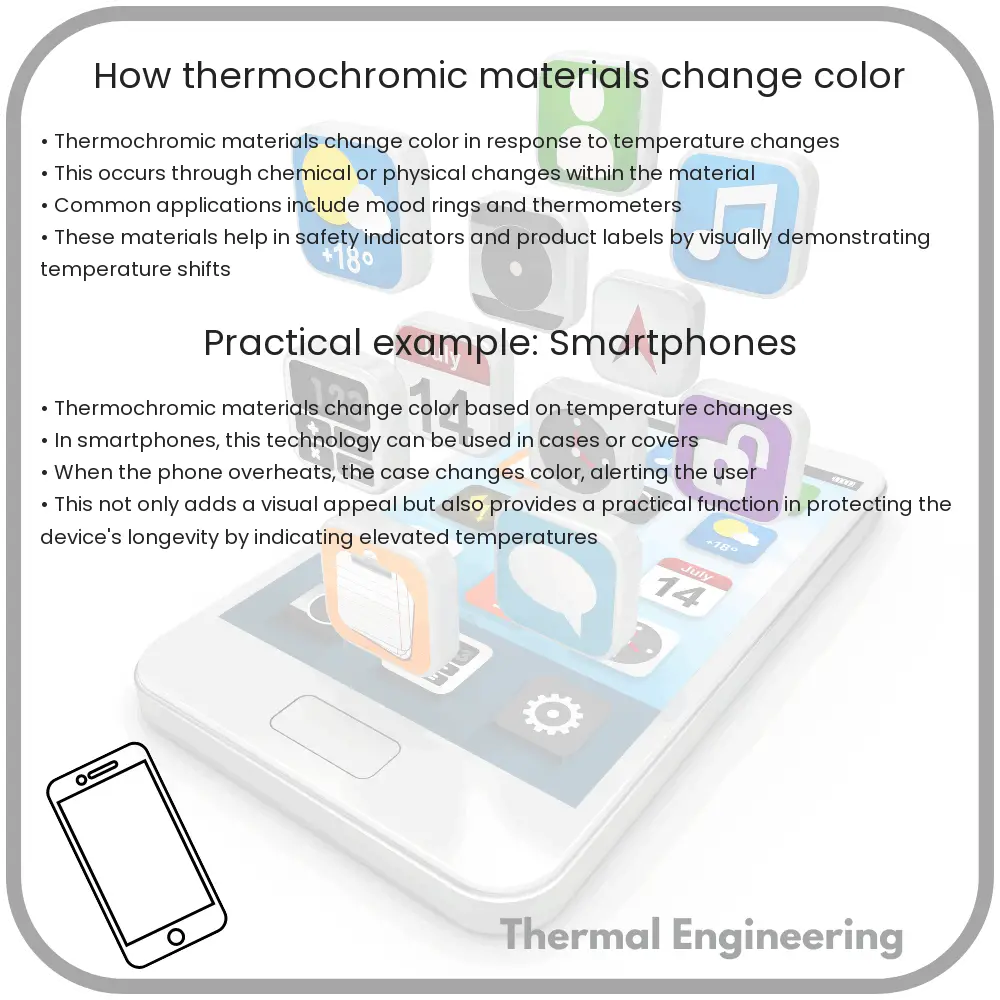Learn about thermochromic materials, their types, color-changing mechanisms, and diverse applications in everyday products.

Understanding Thermochromic Materials and Color Change
Thermochromic materials are fascinating substances that change color in response to temperature fluctuations. This unique trait is utilized in a variety of applications, from mood rings to battery testers, and even in smart textiles that adjust their color to environmental conditions. How these materials work, and the science behind their color-changing properties, involves a blend of chemistry and physics principles.
The Basics of Thermochromic Materials
Thermochromic materials can be primarily categorized into two types: liquid crystals and leuco dyes. Each of these materials reacts differently to temperature changes, thus serving diverse functions across various industries.
- Liquid Crystals: When subjected to temperature alterations, liquid crystals can change their color. Their molecules are sensitive to temperature changes and they reorient at specific temperatures, which affects their ability to reflect light and thus changes their color.
- Leuco Dyes: These are microencapsulated substances which can undergo reversible changes in color. When incorporated with a suitable developer and solvent, these dyes can transition between two chemical forms, causing a color change as a response to temperature adjustments.
How Thermochromic Materials Change Color
The color change in thermochromic materials occurs due to a process known as thermochromism. This involves transforming one chemical structure to another by the input or release of heat. Below, we delve deeper into the mechanisms for both types of thermochromic materials:
- Liquid Crystals: The structure of liquid crystals is highly responsive to temperature changes. At specific temperatures, the spacing between the layers of molecules alters, thus changing the wavelength of light that these molecules reflect. Essentially, as the temperature increases or decreases, the liquid crystals absorb and reflect different wavelengths of light, thereby changing color.
- Leuco Dyes: In the case of leuco dyes, the process involves a reversible chemical reaction. Typically, a leuco dye molecule becomes colorless when dissolved in a particular acid or solvent at a low temperature. As the temperature rises, the solvent’s hold on the dye molecules weakens, enabling these molecules to revert to their colored form.
Applications of Thermochromic Materials
Thermochromic technologies find applications in various sectors due to their ability to inform or warn by means of visible changes in color.
- Mood Rings: A popular novelty item from the 1970s, mood rings contain liquid crystals that change color supposedly indicative of the wearer’s mood, based on body temperature changes.
- Thermometers: Thermochromic liquid crystals are used in strip thermometers that can be placed on the forehead to indicate body temperature.
- Baby Products: Thermochromic dyes are applied to items such as baby spoons that change color when food is too hot.
- Beverage Containers: Some beverage cans use thermochromic ink to show when the content is at an ideal drinking temperature.
- Textiles: Smart textiles incorporate thermochromic materials to change color with the external environment or body temperature, adding aesthetic or functional value to the fabric.
The innovative use of thermochromic materials demonstrates the intricate connection between materials science and practical applications. By harnessing the properties of these materials, engineers and designers can create products that are not only functional but also interactive and responsive to the environment.
Conclusion
Thermochromic materials provide a vivid example of how basic principles from chemistry and physics can be applied to engineer smart, dynamic materials. These materials offer insights into materials science developments and continue to inspire new technologies that respond to our changing needs and environmental conditions.